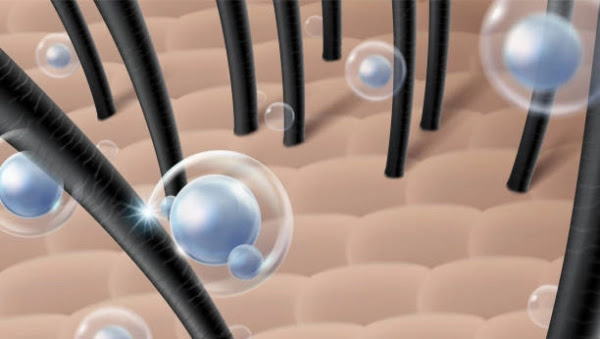Science Behind How Serums Penetrate
The Skin's Layers
Introduction
Serums have become a staple in skincare routines, touted for
their ability to deliver potent ingredients deep into the skin. But how exactly
do these lightweight formulations manage to penetrate through the skin's layers
to deliver their active ingredients effectively? The science behind serum
penetration involves understanding the structure of the skin and the mechanisms
by which serums interact with it. In this article, we delve into the
fascinating science behind serum penetration, exploring the intricate processes
that allow these skincare products to work their magic.
Understanding the
Skin's Layers: Before delving into the science of serum penetration, it's
essential to understand the structure of the skin. The skin is comprised of
three primary layers: the epidermis, the dermis, and the hypodermis.
- Epidermis:
The epidermis is the outermost layer of the skin and acts as a barrier
against environmental aggressors, pathogens, and water loss. It consists
of several sub-layers, including the stratum corneum, the outermost layer
composed of dead skin cells, and the basal layer, where new skin cells are
produced.
- Dermis:
Beneath the epidermis lies the dermis, which contains blood vessels,
nerves, hair follicles, and glands. The dermis provides structural support
to the skin and houses essential components such as collagen and elastin,
which contribute to its elasticity and firmness.
- Hypodermis:
The deepest layer of the skin, the hypodermis, primarily consists of fat
cells (adipocytes) and serves as insulation and padding for the body.
Now, let's explore how serums navigate through these layers to reach their
target destinations within the skin.
The Role of
Formulation: The formulation of serums plays a crucial role in their
ability to penetrate the skin effectively. Unlike traditional moisturizers,
serums are formulated with smaller molecules, allowing them to penetrate deeper
into the skin. Additionally, serums often contain active ingredients such as
vitamins, antioxidants, peptides, and hyaluronic acid, which are chosen for
their specific skincare benefits.
- Molecular
Size: One of the key factors that determine a serum's ability to penetrate
the skin is the size of its molecules. Smaller molecules can penetrate the
skin more easily, reaching deeper layers where they can exert their
effects. Many serums are formulated with low molecular weight ingredients
to enhance their penetration and efficacy.
- Carrier
Ingredients: Serums may also contain carrier ingredients or penetration
enhancers that facilitate the transport of active ingredients into the
skin. These ingredients can help overcome the barrier properties of the
skin, allowing the serum to reach its target sites more efficiently.
Common carrier ingredients include glycerin, propylene glycol, and various
types of surfactants.
Mechanisms of
Penetration: Once applied to the skin, serums employ several mechanisms to
penetrate through its layers and deliver their active ingredients effectively.
These mechanisms include:
- Passive
Diffusion: Passive diffusion is the most common mechanism by which
molecules penetrate the skin. It involves the movement of molecules from
an area of higher concentration (the serum) to an area of lower
concentration (the skin). This process occurs spontaneously and is driven
by concentration gradients. Smaller molecules can diffuse more readily
through the skin's barrier, while larger molecules may require additional
assistance.
- Lipid
Bilayer Penetration: The stratum corneum, the outermost layer of the
epidermis, consists of a lipid bilayer composed of ceramides, cholesterol,
and fatty acids. Serums containing lipid-soluble ingredients can penetrate
this barrier by dissolving in the lipid matrix and diffusing through the
intercellular spaces between corneocytes.
- Transcellular
Penetration: Some molecules can penetrate the skin's barrier by passing
directly through the cells of the stratum corneum via transcellular
routes. This process typically occurs for small, lipophilic molecules that
can interact with cell membranes and traverse them to reach deeper layers
of the skin.
- Active
Transport: In certain cases, active transport mechanisms may facilitate
the penetration of specific molecules into the skin. Active transport
requires energy expenditure and involves the movement of molecules against
their concentration gradient with the assistance of carrier proteins or
channels embedded in cell membranes.
Factors Affecting
Penetration: Several factors can influence the penetration of serums into
the skin, including:
- Skin
Barrier Integrity: The integrity of the skin's barrier plays a crucial
role in determining the penetration of serums. Conditions such as dryness,
damage, or compromised barrier function can hinder penetration and reduce
the efficacy of skincare products.
- Concentration
of Active Ingredients: The concentration of active ingredients in the
serum formulation can impact penetration. Higher concentrations may
enhance penetration, but they can also increase the risk of skin
irritation or sensitization.
- pH
Level: The pH level of a serum can affect its ability to penetrate the
skin. The skin's barrier function is influenced by its acidic pH, and
formulations with pH levels that are too high or too low may disrupt this
barrier, affecting penetration and skin compatibility.
- Formulation
Stability: The stability of the serum formulation can also affect
penetration. Ingredients that degrade or undergo chemical reactions upon
exposure to light, air, or temperature fluctuations may lose their
efficacy before penetrating the skin effectively.
Conclusion
In conclusion, the science behind serum penetration involves
a complex interplay of factors, including formulation characteristics,
mechanisms of penetration, and various skin-related factors. Serums are
formulated with active ingredients and carrier ingredients designed to enhance
penetration through the skin's layers. Understanding these mechanisms can help
skincare enthusiasts make informed choices when selecting serums and optimize
their skincare routines for maximum efficacy. As research in skincare science
continues to evolve, further insights into serum penetration mechanisms may
lead to the development of even more advanced skincare formulations with
enhanced penetration and efficacy.

.webp)
